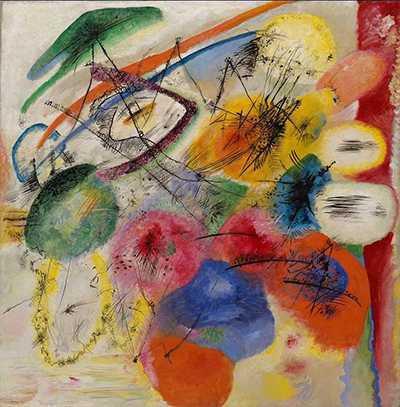Black Lines was a series of paintings by Wassily Kandinsky produced in 1913. This artwork was the first in the series and is now owned by the Guggenheim.
Schwarze Linien, to use its original untranslated title, featured loose circular shapes of bright colour which are then joined by aggressive dark scribbles which lay over the top. This was a period in the artist's career when he was perhaps at his most abstract. He had developed a considerable number of theories regarding many aspects of art, including colour and form. He would now try these beliefs out in his own work and continue his development ever onwards. He never truly stopped evolving as an artist, leaving behind a huge variety of abstract and expressionist styles using an equally diverse set of mediums.
Kandinsky makes use of a number of bright tones in this artwork. There are oranges, yellows, blues, purples and greens. The combination leaves behind a scene that you will remember, even within the huge output of this artist. He experimented over time with differing levels of abstraction, meaning some periods of his work feature identifiable elements whilst others such as this are termed non-objective. He was quoted as explaining how he believed he was taking critics and the public on a journey where sudden changes would be a misunderstood. He slowly changed style so that others could understand his directional change and also felt comfortable with his progression.
The most likely explanation of the content in this painting is that it was based on influences from the city of Moscow. There are three horses represented by the dark lines, plus figures further below which together form a combination of St George on horseback, with a lance in hand. It is hard to prove or disprove this theory, though there would have been considerable amounts of supporting evidence via some of his other artworks where similar elements were also used. Kandinsky himself didn't help this confusion, simply stating that his desire for this painting was to throw a combination of items that he held dear together onto a canvas.




